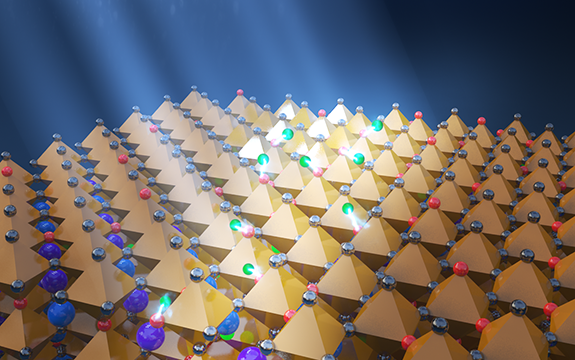From pv magazine global
A sino-Australian research team from Australia’s Center for Translational Atomaterials (CTAM), the University of Technology in China and the universities of Melbourne and Adelaide, has studied how potassium bromide-like compounds can improve the stability of perovskite solar cells.
In a paper published in scientific review Advanced Energy Materials, the scientists claim the passivation effects of potassium doping – commonly known as K+ doping – are able to eliminate interface trapping defects and suppress mobile ion migration within perovskite based cells. That effect contributes to improving stability and resulting in a negligible current-voltage hysteresis – the lag between voltage being applied and current changing as a result.
The researchers monitored the photoluminescence properties and device performance of the mixed‐cation, mixed‐halide perovskite used in their experiment with and without K+ doping, through light illumination via a confocal fluorescence microscope. The scientists say the use of light illumination is crucial to determine how hysteresis suppression upon K+ doping occurs.
Hysteresis suppression
“Sunlight becomes a trigger for the positive formation of potassium bromide-like compounds, eliminating the interface traps and stabilizing the mobile ions, thus resulting in improved power conversion efficiency,” said author Weijian Chen.
Understanding how current-voltage hysteresis affects perovskite cell performance remains one of the main hurdles to overcome before the technology can reach commercial production. According to another piece of recent research, although the parameters affecting hysteresis are broadly known and explained in scientific literature, little research has been carried out into scan direction‐dependent J–V curves depending on perovskite composition.
The study, which suggests different methodologies for hysteresis‐free perovskite solar cells, proposes interfacial engineering as an effective method to reduce hysteresis.
Potassium therapy
In another study led by the U.K.’s Cambridge University, it was shown that adding a potassium iodide solution to a perovskite ink can have the dual effects of healing defects that limit the material’s efficiency and of immobilizing ion movement, which increases stability.
The scientists in the Cambridge study said their technique was compatible with roll-to-roll processes and was, therefore, easily scalable. “We’ve found that perovskites are very tolerant to additives – you can add new components and they’ll perform better,” said lead author Mojtaba Abdi-Jalebi, a PhD candidate at the Cavendish Laboratory.
This content is protected by copyright and may not be reused. If you want to cooperate with us and would like to reuse some of our content, please contact: editors@pv-magazine.com.









By submitting this form you agree to pv magazine using your data for the purposes of publishing your comment.
Your personal data will only be disclosed or otherwise transmitted to third parties for the purposes of spam filtering or if this is necessary for technical maintenance of the website. Any other transfer to third parties will not take place unless this is justified on the basis of applicable data protection regulations or if pv magazine is legally obliged to do so.
You may revoke this consent at any time with effect for the future, in which case your personal data will be deleted immediately. Otherwise, your data will be deleted if pv magazine has processed your request or the purpose of data storage is fulfilled.
Further information on data privacy can be found in our Data Protection Policy.